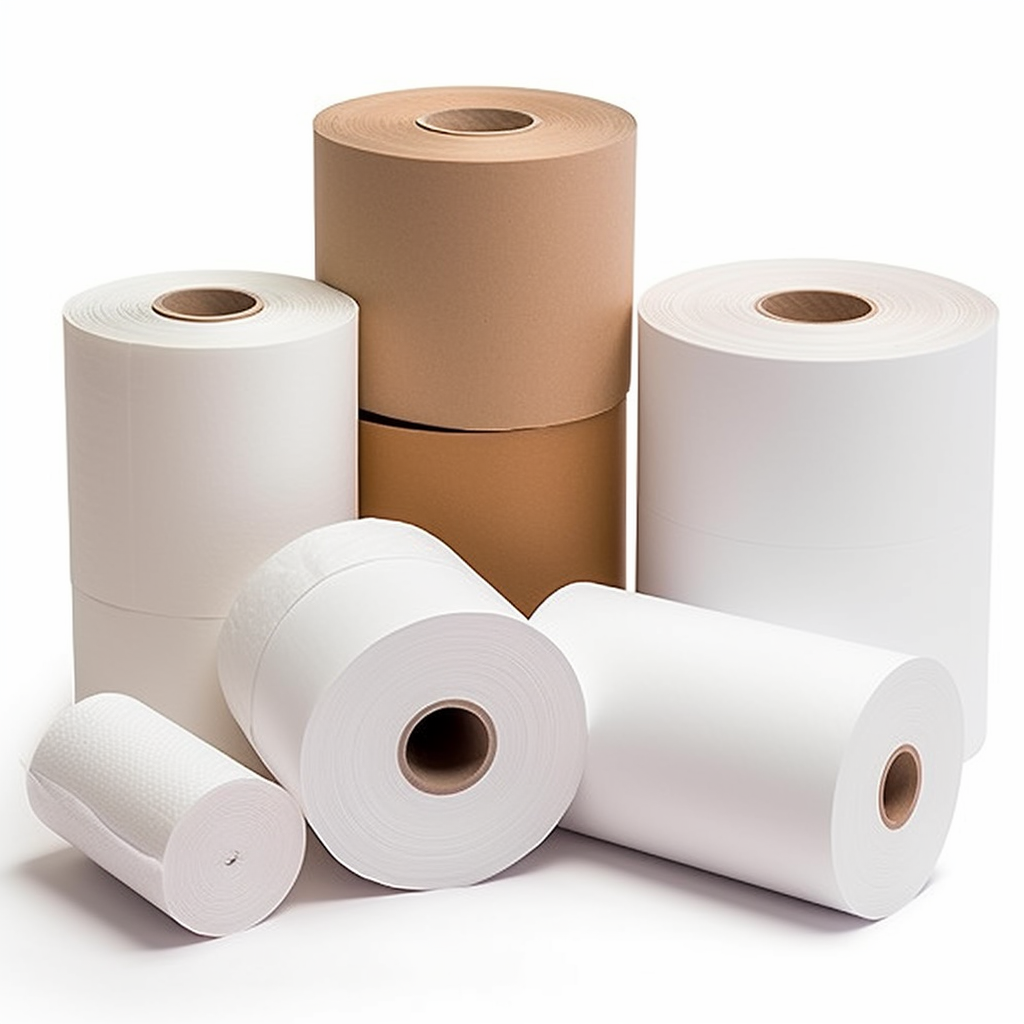
Thermal printing paper is a type of printing paper commonly used in applications such as receipts, labels, and bills. However, for many people, the recyclability of thermal printing paper remains in question. This paper will analyze the sustainability of thermal printing paper and its recycling and environmental protection issues.
The special feature of thermal-sensitive printing paper lies in its printing principle. The thermal printer is heated by a hot head to produce images or text without the need to use traditional ink or cartridges. The coating of thermal paper contains heat sensitive material, when stimulated by heat energy, the coating chemical react to form a visible image.
Because the coating of thermal paper contains chemicals, this may pose some challenges in its recovery and reuse. Some traditional paper recovery processes may not be able to effectively handle the chemical composition in thermal paper. In addition, thermal paper usually retains thermal images or text after use, which further increases the difficulty of recycling.
Nonetheless, several thermal printing paper suppliers and recycling agencies have developed several techniques and methods to improve the recyclability of thermal paper. These methods include:
Coating separation: the coating of the thermal paper is separated from the paper through a special treatment process to treat the paper and the coating separately. This allows for an efficient recovery and reuse of the paper, while the coating is properly processed or recycled.
Chemical treatment: through the chemical treatment process, the chemical components in the thermal paper are decomposed or converted into environmentally friendly substances. This can reduce the impact on the environment and create conditions for paper recycling.
However, it should be noted that the recovery and reuse of thermal paper still faces some technical and economic challenges. At present, there is no universal recycling solution, and the cost of recycling thermal paper may be high. Therefore, in many areas, thermal paper is still considered as an unconventional recycled material.
In the perspective of sustainability, reducing the use of thermal paper is preferdesirable. Here are some suggestions for sustainability:
Reduce the use: Minimize the use of thermal paper. Consider using electronic methods to store and transmit information to reduce the need for printed paper.
Choose the recyclable thermal paper: If you must use the thermal paper, select those products marked with the recyclable logo. These papers are usually specially processed to make it easier to separate and process during the recycling process.
Explore sustainable alternatives: study other highly sustainable printing technologies and materials, such as recycled plain print paper or printers that use environmentally friendly ink cartridges.
Ensure proper disposal: If you use thermal paper, make sure it is handled correctly. Place waste paper in designated recycling containers or process according to local waste paper disposal guidelines.
Education and awareness enhancement: Educate employees and users about the recycling and sustainability of thermal paper, and improve their awareness and action.
Despite some challenges in the recyclability of thermal paper, we can still take a series of measures to reduce the environmental impact. Choosing recyclable thermal paper, reducing usage, and finding alternatives are all steps towards a more sustainable printing practice.
In conclusion, the recyclability of thermal paper is limited to some extent by technical and economic factors. However, we can improve the sustainability of thermal paper by reducing usage, selecting recyclable thermal paper, finding alternatives, and properly disposing of waste paper.
